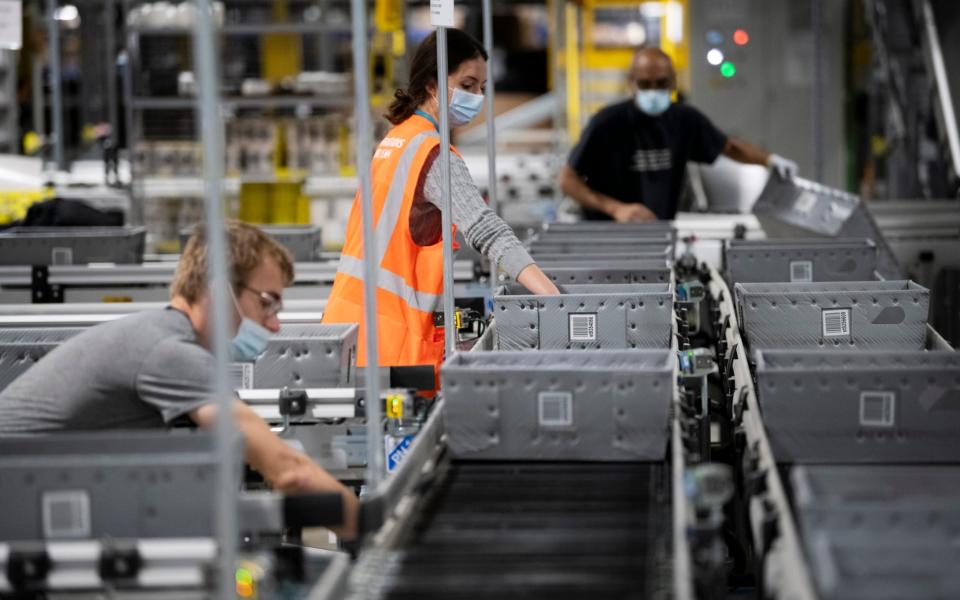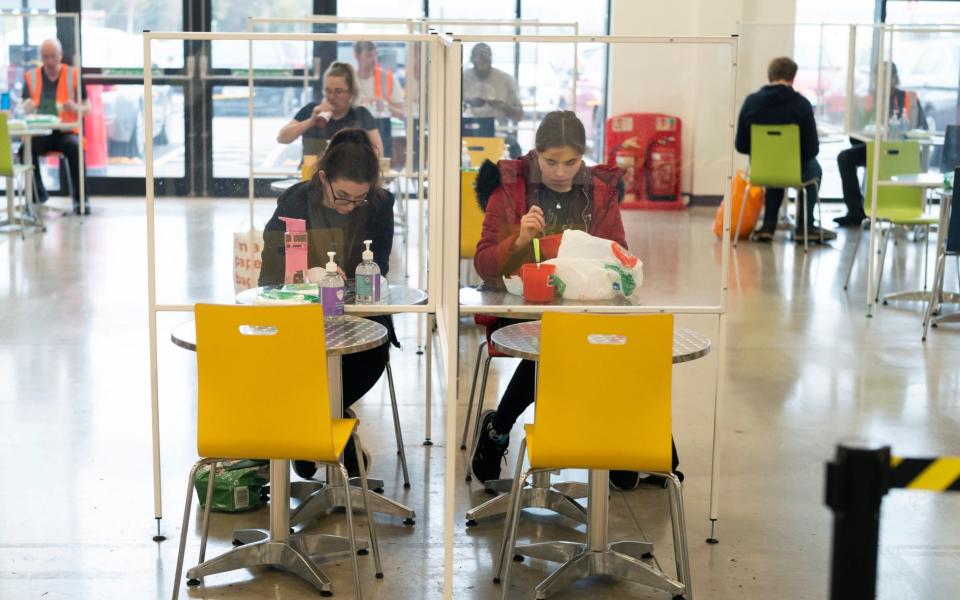Inside Amazon's new UK warehouse as the e-commerce giant gears up for a blow-out Christmas

Neil Travis is looking sheepish as he stands in the entrance lobby of Amazon’s vast logistics centre in Kegworth near Derby.
The regional director has just set off the “social distancing” siren for the third time in as many minutes. “Stay safe,” bellows a voice around the lobby. “Please adhere to the two metre distancing.”
“That was young Wayne’s voice there," shouts Travis apologetically, as he nods at one of the security team sitting behind a perspex screen.
The announcements, he explains, are triggered by cameras fitted with artificial intelligence technology to monitor when workers are within two metres of each other for more than three seconds.
It is just one of many safety measures put in place at Jeff Bezos's sprawling empire to protect itself from a Covid outbreak. After all, Amazon has no time for a shutdown.
Even before the pandemic, Amazon was already a huge force in ecommerce - responsible for one third of all online sales in the UK. Since March, it has ballooned with profits more than trebling, sending Amazon's market value surging by two thirds to $1.57 trillion. The share price rise has made Mr Bezos around $90bn richer.

Over the next few weeks, as Christmas approaches, analysts say the ecommerce giant will be having to pull off a “high wire balancing act”.
There is a lot at stake. If all goes to plan Amazon is set to rake in at least £6bn this year in UK sales over November and December. In total, ecommerce sales will be 17pc higher than last year, according to eMarketer.
On Tuesday, mere days before Amazon’s festive period kicks off in earnest with the discounting event Black Friday, an eerie sense of calm surrounded the Kegworth logistics site, upbeat music blasting out the speakers and workers strolling from one station to the next, as conveyer belts loop across the facility.
But, preparations have clearly been underway to cope with this testing period. In Kegworth, around the 500,000 square foot site where customer orders turn into deliveries, large pallets lay empty, ready for “fast selling” items that will go straight out the door. Gift wrapping stations are lined up, ready to be filled by “Amazonians” for those having presents delivered straight to their relatives this year.
Getting to this capacity has been harder than it normally would for Amazon. At the start of the pandemic, it made workers leave stations free for social distancing. Now, though, it has started using perspex screens.

Some parts of the building that had in the past been used for meetings have been converted into more storage or canteen space. It has ramped up cleaning of sites, planted stickers all over the floor to remind workers of social distancing, and implemented one way systems.
There is a clear sense that demand will surpass anything any of the 2,000 workers have seen before. Already questions have been mounting over whether Amazon will be able to cope, with the company having urged shoppers earlier this week to order early to avoid shipping delays. But, as one of those running the logistics sites, Travis does not appear too concerned.
These are, he says, “highly automated buildings”, finely-tuned operations which use technology to track orders, demand and ultimately send parcels on their way.
Here in Kegworth, where the site has been open for around a year, everything is driven by such systems. “The conveyor belts don’t speed up or slow down depending on what time of the year it is,” Travis says, signalling to the steady stream of packages moving along the belts towards a machine "blowing" shipping labels on.
“It doesn’t matter if it’s Black Friday or December 27, they operate at the same speed. What we’ve done is just started filling stations [with workers] that we weren’t using at the star of the pandemic, and we can do this by using the perspex screens.”

Travis may brush off concerns over how quickly the company can deliver orders, but there is clearly one thing that would slow down deliveries significantly - an outbreak of Covid-19.
Dan Ives, an analyst at Wedbush, says “making sure the logistics of the factories and distribution does not get impacted by Covid is key to Amazon’s success” over the festive period.
Amazon is “under a bright spotlight after the issues in its distribution centre encountered in the early days of the pandemic”, he says. Ives is not wrong.
Especially in its US facilities, Amazon was battered by claims that staff were not being given enough protection from the deadly virus, with some former employees pointing to outbreaks in sites as proof. Amazon contested such claims.
Concerns are not just limited to how secure Amazon's sites are, though, but the pressure it is placing on staff. Trade unions last month warned that workers were being pushed to their limits in logistics sites, pointing to research conducted by GMB that found that ambulances were called out 600 times to Amazon warehouses between 2015 and 2018.
Amazon has called these "sensationalised allegations" which paint a "false picture" of the sites. It said last month it was a "safe place to work".

Still, guaranteeing this during Covid is a tough task - and one Amazon has been trying to address. Across its sites, staff are temperature-checked and required to pick up a mask before entering the buildings. The US giant also operates its own Covid-19 testing bases inside its facilities, manned by at least one clinician. Staff are not forced to take tests, although Amazon says “most people” opt in.
If they receive a positive test, Amazon kicks off its own “contact tracing” work, interviewing those who have fallen ill and monitoring CCTV to see who they have come into contact with, then sending those members of staff off to isolate on full pay.
“We don’t want them in the building,” an Amazon spokesman says. “One person represents a risk, and they could potentially impact lots of people.” Despite all this work, “we will have had Covid cases,” Travis says. “It’s in the area isn’t it.”
But, he says, in his mind, Amazon has done “everything physically possible” to stop the virus spreading in its sites. Soon, it will become clear if this has been enough.
